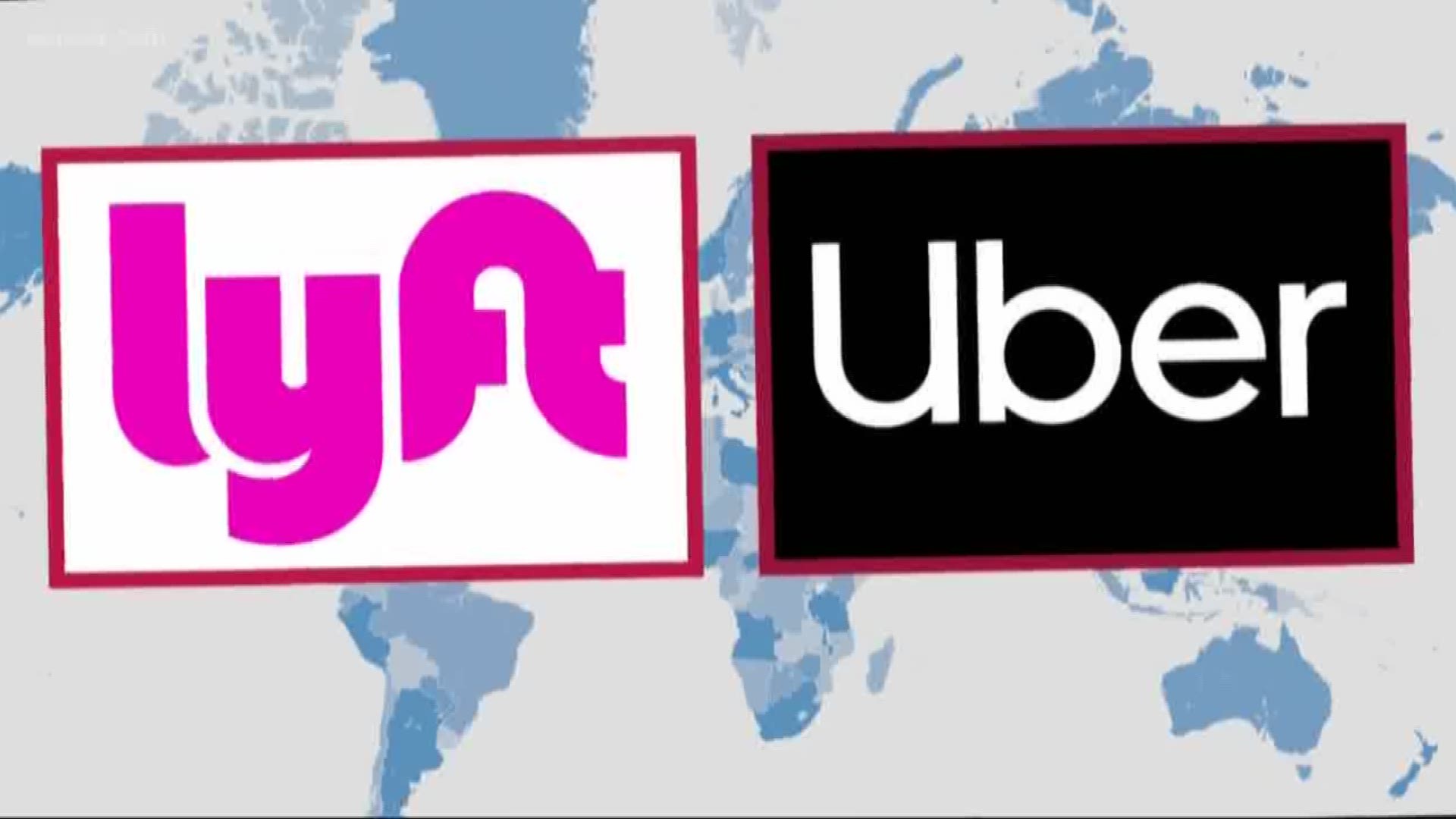WASHINGTON — While they’ve long argued against it, Uber and Lyft are now conceding to the idea that ridesharing is making up a growing chunk of traffic in major cities, including D.C.
The ridesharing giants commissioned the just-released study by transportation consulting firm Fehr & Peers. It analyzed the total number of vehicle miles driven in six cities during of September 2018.
Of the six metropolitan areas surveyed, ridesharing makes up between one and three percent of all vehicle miles driven. While that doesn’t sound like much, the number gets larger when zeroed in on a population center-- or what the study calls a “core city,” ours being The District of Columbia.
D.C. falls in the middle with ridesharing making up about seven percent of all vehicle miles traveled. Compare that to San Francisco, where the study found that 12% of all car traffic is made up by ridesharing. Interestingly, this study did not look at the biggest metro area of New York.
“The research shows that despite tremendous growth over the past decade,” said Uber’s head of global policy for public transportation Chris Pangilnan, who added that Uber “still pales in comparison to all other traffic.” Pangilnan said ridesharing “is likely contributing to an increase in congestion, its scale is dwarfed by that of private cars and commercial traffic.”
RELATED: 10,000 new rideshare drivers a year: New Census data shows how industry has exploded in DC area
Not only is ridesharing accounting for more miles traveled, but they make up more cars on the road. A WUSA9 analysis of the latest census data found that more than 48,000 people in the D.C. region were working in the ridesharing industry, a number that’s more than doubled in five years.
Earlier this year, researchers at the University of Kentucky found that ridesharing apps caused dips in mass-transit ridership in major cities and caused traffic to get worse.
“Research suggests that this shift results in a large increase in traffic congestion, which may result in most travelers being worse off,” researchers said.
You can view the full study below:

